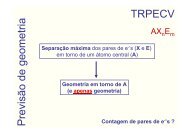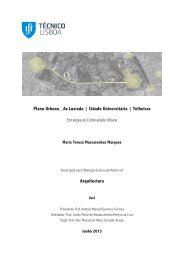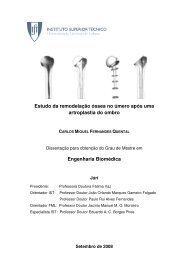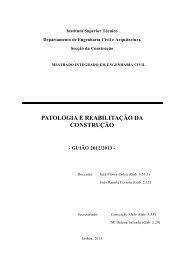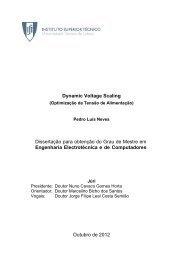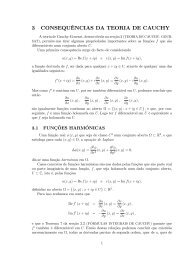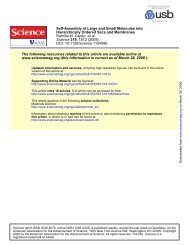dissertacao.pdf
dissertacao.pdf
dissertacao.pdf
Create successful ePaper yourself
Turn your PDF publications into a flip-book with our unique Google optimized e-Paper software.
If we want to solve a system of linear modular equations there is one efficient<br />
theorem which provides the correct answer quickly:<br />
Theorem 1. (Chinese Remainder Theorem): Let a1, ..., .an be n integers<br />
and p1, ..., pn be relatively prime positive integers. Set P = n<br />
i=1 pi and, for<br />
i = 1, ..., n define yi such that:<br />
Then, one solution of the system<br />
is given by:<br />
⎧<br />
⎪⎨<br />
⎪⎩<br />
P<br />
yi<br />
∼= 1 (mod pi) (9)<br />
pi<br />
x ∼ = a1 (mod p1)<br />
x ∼ = a2 (mod p2)<br />
.<br />
x ∼ = an (mod pn)<br />
x0 =<br />
n<br />
i=1<br />
P<br />
aiyi<br />
pi<br />
Any other integer solution, x, of the system of congruences satisfies:<br />
1.5.4 Useful Algorithms and Results<br />
(10)<br />
x ∼ = x0 (mod P ) (11)<br />
We now include some useful definitions and results used in the proofs of the<br />
attacks presented in chapter 3.<br />
Definition 12. Let<br />
p(x) = anx n + an−1x n−1 + ... + a1x + a0<br />
be a polynomial of degree n with roots αi for i = 1, ..., n and<br />
q(x) = bmx m + bm−1x m−1 + ... + b1x + b0<br />
be a polynomial of degree m with roots βi for i = 1, ..., n.<br />
The Resultant of p and q, denoted Resultant(p, q), is defined by<br />
n<br />
Resultant(p, q) = a m n b n m<br />
i=1 j=1<br />
10<br />
(12)<br />
(13)<br />
m<br />
(αi − βi) (14)



